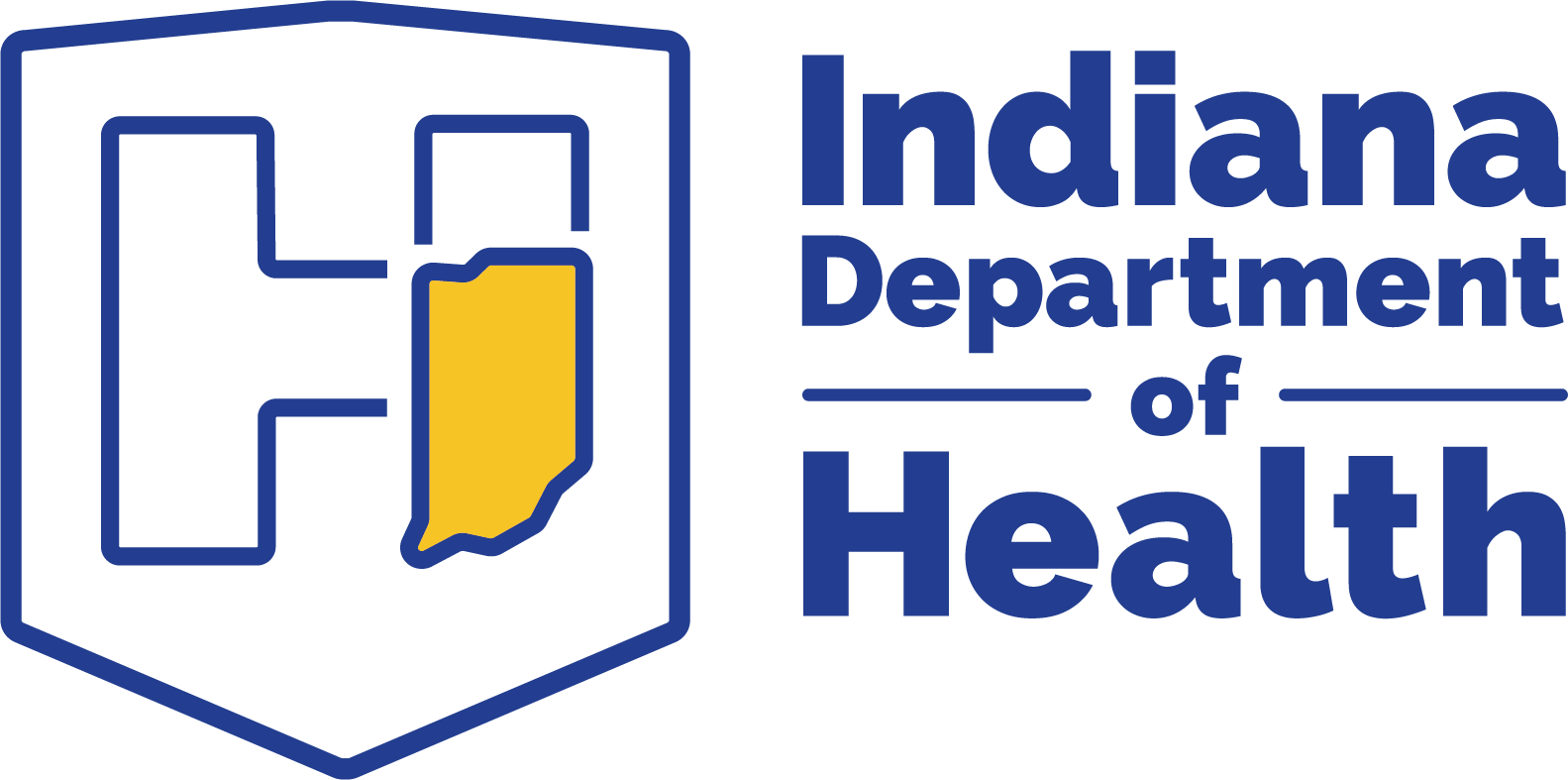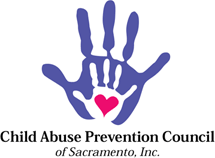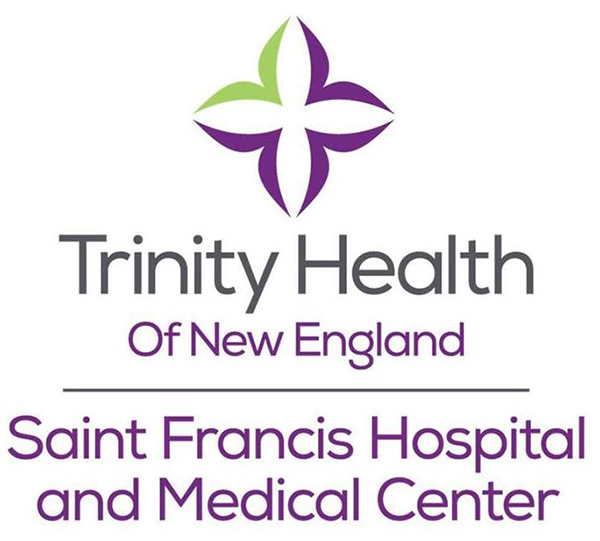Child Safety Forward
A national initiative to reduce child abuse and neglect fatalities and injuries through a collaborative, community-based approach.
Children in the U.S. are healthier and safer than ever before, and medical advances in treating childhood diseases have made enormous strides over the last few decades. Although the overall U.S. child mortality rate has improved over time, the number of child deaths due to abuse and neglect has remained steady or even increased. Each year, somewhere between 1,750 to 3,500 children die from maltreatment. The children who die are quite young. In 2018, 71% of all children who died from maltreatment were younger than three years old. Almost one-half of the children are younger than one year old.
Like other causes of childhood illness and death, child maltreatment can be prevented, and the associated risk factors can be addressed. Child maltreatment deaths are not inevitable. This was the message delivered in a groundbreaking report from the U.S. Commission to Eliminate Child Abuse and Neglect Fatalities. In its 2016 report Within Our Reach: A National Strategy to Eliminate Child Abuse and Neglect Fatalities, the commission provided a blueprint for a public health approach that identifies and addresses the root causes of child maltreatment, engages with multiple stakeholders to address these causes collaboratively, and is a shared responsibility between families and communities.
In October 2019, the U.S. Department of Justice, Office of Justice Programs, Office for Victims of Crime launched Child Safety Forward, a three-year demonstration initiative to develop multidisciplinary strategies and responses to address serious or near-death injuries as a result of child abuse or neglect and to reduce the number of child fatalities. The efforts will be responsive to the 21st-Century Child Welfare System as envisioned by the federal commission and will result in models for coordinated responses. Within Our Reach, an office at Social Current that is supported by Casey Family Programs, serves as the national technical assistance provider to the five demonstration sites.
The five participating sites are:
- St. Francis Hospital in Hartford, Connecticut
- Cook County Health in Illinois
- Indiana Department of Health
- Michigan Department of Health and Human Services
- Sacramento County’s Child Abuse Prevention Council in California

The sites are receiving technical assistance from a team of national experts that is geared toward helping them plan and implement an all-systems approach and coordinated strategic planning to respond to and reduce their child maltreatment fatalities and child crime victimization. It will support them in improved data collection and analysis using a safety science approach, development of strong community collaboratives, engagement of persons with lived experiences, and developmental evaluation.
Final Evaluation Report
Read the final evaluation report for more information about the sites, key lessons, and takeaways of the initiative.
Case Studies of Participating Sites

In 2019, Indiana completed
64.4/1000
child abuse and neglect assessments.
The 3rd highest rate in the nation.
In 2019,
242,482
reports were made to the Child Abuse Hotline in Indiana.
61%
of removals of children from their homes in 2019 were related to parental substance abuse.
195
child fatalities due to external injury from 2014 to 2018 will be reviewed.

Retrospective reviews of child fatalities will be conducted in four counties to help identify family and systemic circumstances for those deaths.
Once evaluation is complete (through the Indiana University (IU) School of Social Work), the ISDH/IU team will create a plan to mitigate risk factors that affect children in order reduce those fatalities.
Protocols will include the following:
- Deploy communications strategy to engage community
- Conduct ongoing evaluation and lessons learned from retrospective review
- Develop tools and communicate findings to adjust strategies
- Implement sustainability plan
Newsroom
- Indiana State Department of Health Launches Effort to Help Prevent Child Fatalities – WBIW.com
- A Former Foster Youth Is Contributing to National Initiative On Child Abuse, Neglect – Youth Today
- Twenty-Five Foster-Care/Adoption/Child-Welfare Things That Caught My Eye Today – National Review
- Putting Community Action at the Heart of Systems Change – Social Current
- Reader Viewpoint: Amy Templeman – The Herlad Bulletin
- Instead of helping families after child abuse, Indiana moves focus to prevention – IndyStar
- Child Safety Forward Indiana Releases Final Report Highlighting Findings in Multi-Year Effort to Develop Strategies to Reduce Child Abuse and Neglect in Four Indiana Countries – Press Release
Final Project Evaluation Documents
This report is the culmination of an in-depth evaluation of the Child Safety Forward – Indiana project. Their findings from 127 child fatality reviews conducted during the project period, along with documentation of the multiple ways that the CSF Indiana team has secured improvements to the child fatality review process in the State. The Indiana team also provides a set of recommendations based on the evaluation that is intended to further enhance the capacity of Indiana communities to prevent child fatalities due to external injury. See the final evaluation document here.
Final Evaluation Brief
As part of the final implementation study, each site identified a practice or policy change advanced through their work with CSF for a dialogue on how to impact systems change. These briefs delve into the design of the site’s policy or practice and suggests recommendations for similar initiatives based on the site’s experiences and lessons learned. See the final evaluation brief here.

An average of
10,000
reports are made annually in the state of Illinois for deaths, or serious injuries, due to suspected child abuse or neglect.
It is estimated,
50%
of children who die from fatal injuries caused by child maltreatment have had no previous contact with the child welfare system.

Retrospective reviews of child fatalities and serious injuries will be conducted in three counties to help identify family and systemic circumstances for those deaths.
Community stakeholders will explore potential service gaps that may place children at risk for maltreatment including:
- Healthcare providers
- Community members
- Maternal infant health providers
- Educators
- Social service providers
- Faith leaders
- Law enforcement
- Child welfare
- Child advocacy fields
In addition to facilitating information sharing, Cook County Health will:
- Convene simulation training and multi-disciplinary team training
- Utilize risk analysis mapping of neighborhood “hot spots” of interpersonal violence
- Facilitate access to telehealth services with a Child Abuse Pediatrician
- Implement sustainability plan
Newsroom
- Cook County Health Releases Child Safety Forward Implementation Plan to Reduce Child Abuse and Maltreatment in Cook, Peoria and Vermilion Counties – Cook County Health
- Using Data to Prevent Deaths from Child Abuse and Neglect – Daily Herald
- Keeping Infants Safe While Sleeping – Chicago Sun Times
- Cook County Health’s Project Child Releases Child Safety Forward Evaluation Report Highlighting Findings in Multi-Year Effort to Develop Strategies to Reduce Child Abuse and Neglect across Illinois – Press Release
Final Project Evaluation Documents
Cook County took a public health approach to better understand the high child abuse and neglect reports in three Illinois counties–Cook, Peoria, and Vermilion. They convened a multi-disciplinary group of community stakeholders who work with vulnerable families in a variety of different settings to form Project CHILD. Together, Project CHILD acquired data that helped them better understand the challenges these three counties were facing and the strategies they could implement to improve the conditions. See the final evaluation document here.
Final Evaluation Brief
As part of the final implementation study, each site identified a practice or policy change advanced through their work with CSF for a dialogue on how to impact systems change. These briefs delve into the design of the site’s policy or practice and suggests recommendations for similar initiatives based on the site’s experiences and lessons learned. See the final evaluation brief here.

140
children were victims of an abuse and neglect fatality/near-fatality
80%
of victims were ages 1–5 and 50% were <1
64%
of perpetrators were biological parents acting together or alone
63%
had prior child welfare involvement

3 frameworks will be used in the development and implementation of the strategic plan: 21st Century Child Welfare System, Public Health Model, and Collective Impact.
Community stakeholders will explore potential service gaps that may place children at risk for maltreatment including:
Department of Child, Family and Adult Services
- Public Health
- Hospital Systems
- Community-Based Service Programs and Organizers
- District Attorney
- Law Enforcement
- Mental Health
- School Systems
Protocols will include the following:
- Deploy communications strategy to engage community
- Conduct ongoing evaluation and lessons learned from retrospective review
- Develop tools and communicate findings to adjust strategies
- Implement sustainability plan
Newsroom
- Brokering a Better Relationship with Communities of Color – The Imprint
- Essay: We can prevent child abuse – SN&R
- Vulnerable children are at risk of abuse during coronavirus crisis. Let’s protect them. – The Sacramento Bee
- Advocates worry child abuse may go unreported during stay-at-home order – CAP Radio
- Coronavirus shelter-at-home rules upend U.S. child abuse prevention system – Reuters
- The Child Abuse Prevention Council of Sacramento Releases Child Safety Forward Evaluation Report Highlighting Findings in Multi-Year Effort to Develop Strategies to Reduce Child Abuse and Neglect across Sacramento County – Press Release
Final Project Evaluation Documents
This initiative has supported the Sacramento County Prevention Cabinet (Prevention Cabinet) to plan and implement a cross-systems strategic plan that incorporates the principles of the public health approach and the core components of the 21st-century child welfare system, as identified in Within Our Reach: A National Strategy to Eliminate Child Abuse and Neglect Fatalities. See the final evaluation document here.
Final Evaluation Brief
As part of the final implementation study, each site identified a practice or policy change advanced through their work with CSF for a dialogue on how to impact systems change. These briefs delve into the design of the site’s policy or practice and suggests recommendations for similar initiatives based on the site’s experiences and lessons learned. See the final evaluation brief here.

Hartford, Connecticut averaged
17.6
substantiated cases of child maltreatment per 1000 children
That is nearly
2x
the state and national average during the same period
Challenges in strategic coordination and disconnect between organizations will be remedied through a community-based, public health approach.
A multidisciplinary team of stakeholders comprised of state agencies and community-based organizations to:
- Share data
- Coordinate services
- Facilitate community participation
- Develop an implementation plan of best practices
In addition to facilitating information findings, Saint Francis will:
- Standardize and improve data collection
- Increase community awareness and participation in reducing child fatalities
- Identify and initiate best practices
Newsroom
- DOJ-funded report finds child maltreatment rates in Hartford twice the national average – NPR Connecticut
- Parent engagement is essential to reducing child abuse and neglect in CT – Connecticut Mirror
- Trinity Health of New England Releases Child Safety Forward Evaluation Report on Strategies to Reduce Child Abuse and Neglect in the Hartford Area – Social Current
- Child Welfare System in the United States – The Imprint
- Why the Social Sector is Essential to Achieving Health Justice Across the United States – Nonprofit Quarterly
- Regina S. Dyton: Child well-being systems better serve all families – Hartford Courant
- Trinity Health of New England Releases Child Safety Forward Evaluation Report Highlighting Findings in Multi-Year Effort to Develop Strategies to Reduce Child Abuse and Neglect in Greater Hartford Area – Press Release
- A Conversation on Race and the Child Welfare System in the United States – The Imprint
Final Project Documents
Hartford’s Child Safety Forward project brought together a multidisciplinary team of stakeholders to share data, coordinate services, facilitate community participation, and seek best practice recommendations. As a core strategy, the site recruited a Parent Engagement Workgroup drawn from parents with lived experience with the foster care and child welfare systems and other local advocacy groups. Watch this video to meet the parents and grandparents of the Parent Engagement Work Group. They share what child safety and shifting power to parents means to them, why they joined the work group, and more.
Project Overviews
These files include a summary of data collection results that was presented by the independent evaluator and a written report outlining lessons learned through the entirety of the project and goals and plans for project continuation.
Educational Guide: From Pain to Parenting
This educational guide created by the Child Safety Forward Hartford team and its Parent Engagement Workgroup addresses multiple topics to help parents raise healthy, safe children. Following the conclusion of Child Safety Forward participation, parents will implement this curriculum throughout Hartford’s neighborhoods.
Final Evaluation Brief
As part of the final implementation study, each site identified a practice or policy change advanced through their work with CSF for a dialogue on how to impact systems change. These briefs delve into the design of the site’s policy or practice and suggests recommendations for similar initiatives based on the site’s experiences and lessons learned. See the final evaluation brief here.

With input from an advisory panel, the Michigan Department of Health and Human Services will focus on the following:
- Employ a collective impact approach
- Enhance the level of services for families in need of support
- Improve safety planning across Michigan’s child protection system
To improve the level of services for families, they will examine outcomes of current policies and practices related to families with low or moderate risk for child maltreatment to identify change recommendations. They will also partner with statewide or regional outreach efforts that focus on protective factors and work to promote these services to families.
Finally, they will review current safety planning practices, assess the perceived needs, barriers, and facilitators to safety planning among child protective services workers and other professionals, and assess the perceptions of safety plans among persons with lived experience. Collectively, this information will be used to identify areas for practice change and inform the development of educational resources and supports to reinforce safety plan best practices.
17
counties
have no substance use treatment facilities and an additional
9
counties
have high population to facility ratios

18
counties
have no mental health treatment facilities and an additional
15
counties
have high population to facility ratios
Newsroom
- MDHHS one of only five agencies nationally to receive federal grant to prevent child abuse/neglect deaths, injuries – Upper Michigan Source.com
- MDHHS 1 Of 5 Agencies Nationally To Receive Federal Grant To Prevent Child Abuse Or Neglect Deaths, Injuries – CBS Detroit
- MDHHS, Children Trust Michigan provide $1.9 million to create six family resource centers around Michigan – Michigan Department of Health and Human Services
Final Project Evaluation Documents
During the first 15 months of the initiative, the Child Safety Forward Michigan team convened a collaborative body of diverse partners to advise and provide insight on the needs of the larger community and worked to build learning capacity and increase understanding on the issues surrounding child maltreatment. Through their findings, they began implementing strategies meant to: 1) employ a collective impact approach to improve the resiliency of Michigan families, 2) enhance services for families with low to moderate risk levels for child maltreatment, and 3) improve safety planning across the child welfare system. See the final evaluation document here.
Final Evaluation Brief
As part of the final implementation study, each site identified a practice or policy change advanced through their work with CSF for a dialogue on how to impact systems change. These briefs delve into the design of the site’s policy or practice and suggests recommendations for similar initiatives based on the site’s experiences and lessons learned. See the final evaluation brief here.
This product was supported by cooperative agreement number 2019-V3-GX-K005,
The OVC FY 2019 Reducing Child Fatalities and Recurring Child Injuries Caused by Crime Victimization demonstration initiative.

Child Safety Forward Evaluation Briefs
Demonstration Sites Final Briefs
As part of the final implementation study, each demonstration site identified a practice or policy change advanced through their work with CSF for a dialogue on how to impact systems change. These briefs delve into the design of the site’s policy or practice and suggests recommendations for similar initiatives based on the site’s experiences and lessons learned.
Child Safety Forward Planning Year
This evaluation brief offers insights on the learning that took place during the planning year of the initiative. It identifies four opportunities for the field that, when addressed, will accelerate the advancement of a 21st-century child and family well-being system.
Reframing Childhood Adversity Promoting Upstream Approaches
In year two, while focused on implementation, the initiative refined the theory of change to include greater intentionality around three core conditions. This set of briefs delves into those conditions:
- Elevate families into relationships of equal power within systems
- Build intentional strategy to systematically assess and address racism
- Sustain communications strategy
A Reflection Guide to Shape Provider Conversations about Infant Sleep
The safe sleep brief is set up to offer providers a tool based on Child Safety Forward learning to help think through how bias shows up at the individual, relational, and institutional level and helps re-design our work with community so that we stand a far greater chance of finding solutions in partnership with them around the universal goal of child safety.
Learning Brief: Sustainability
This sustainability brief learning examines how Child Safety Forward was set up to encourage demonstration sites to apply a more comprehensive definition of sustainability during implementation, and it presents our recommendations for how funders and technical assistance teams can support sustainability.
Child Safety Forward Resource Briefs
During the first planning year of the Child Safety Forward initiative, the technical assistance team developed a series of resource briefs on topics most relevant to the demonstration sites. Topics were identified through a needs assessment and conversations with the sites about their interests. These briefs helped to inform strategies chosen by the sites for the two-year implementation period.
National Newsroom
- A preventative approach to reducing child abuse and neglect fatalities – The Hill
- Justice Department Starts $7 Million Project on Preventing, Reducing Worst Child Welfare Outcomes – The Imprint
- We Have Chance to Build Better Child, Family Well-Being System – Youth Today
- Stronger Communities, Safer Families, Zero Fatalities – Children’s Bureau Express
- A Conversation on Race and the Child Welfare System in the United States – The Imprint
- A Former Foster Youth Is Contributing To National Initiative On Child Abuse, Neglect – Youth Today
- The Plans for Justice Department Pilot on Preventing Fatal Abuse and Neglect – The Imprint
- Why the Social Sector is Essential to Achieving Health Justice Across the United States – Nonprofit Quarterly
- Report Focuses on Parent and Community Organizing for Child Maltreatment Intervention and Prevention – Office for Victims of Crime
- Rethinking the Community Response to Child Neglect – FIJ Quarterly
